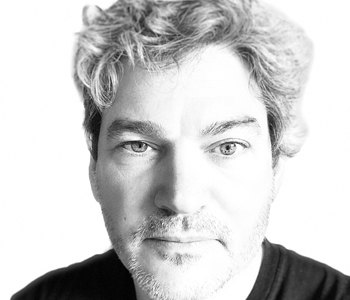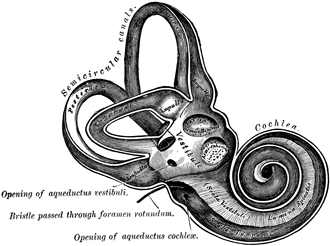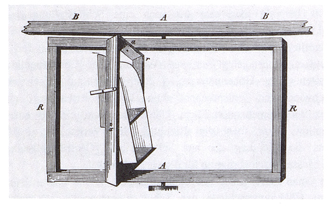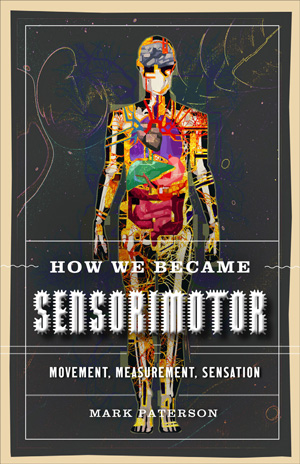
The book is a social history of the science of the body’s inner senses. We think we know about the five senses that Aristotle had identified and placed into a hierarchy in De Anima (On the soul) and De Sensu et Sensibilibus (On sense and sensibility), with vision as the most important and smell and touch the least, the latter shared with base animals. But what about sensations which seem interior to the body yet which are fundamental to our sense of our own embodiment? What about balance, pain, fatigue, the so-called ‘muscle sense,’ the sense of our bodily position in space (proprioception), and the sense of movement (kinesthesia)? The book examines what we know about these inner senses, including the body’s sense of movement, and the instruments and technologies designed by scientists to observe, trace, and represent those sensations and movements.
The historical focus is the years between 1833 and 1945. This was an immensely transformative period, historically and politically, but also scientifically, the understanding of the body’s inner senses was fundamentally transformed. Scientific discoveries about the body and the measurement of previously unexamined sensations had wide-ranging effects in a surprising number of areas, including immediate practical applications in industry, sport, and military training. Later it would have substantial implications for explorations into phenomenology, embodied consciousness, the extended mind, and theories of the so-called ‘sensorimotor’ body, which I will get into later.
With this in mind, I delved into the historical literature and conducted original archival research at the Montreal Neurological Institute (MNI) on the neurosurgeon Wilder Penfield and his collaboration with the medical illustrator Hortense Cantlie; at the Wellcome Trust in London to consult letters and correspondence of physiologist and neuroscience pioneer Charles Sherrington; and at the Institute of Neurology in Bloomsbury, London. Their historic discoveries are detailed in the book.
The significance becomes clear through the questions I ask in the book: What is the story of each inner sense, how did it become distinct and measurable, and how is it regarded in the scientific literature to this day? Each chapter takes a particular sense and historicizes its formation by means of recent scientific studies, case studies, or coverage in the media. This array of inner sensations, including balance, fatigue, pain, the “muscle sense,” and the essence of physiological movement which Étienne-Jules Marey tried to make visible, and which Maurice Merleau-Ponty termed “motricité,” become distinct chapters. In several chapters I move outward from the familiar confines of the laboratory to industrial settings and even to wild animals and their habitats. The book includes important or now-forgotten stories, such as how pain measurement schemes transformed criminology, or how Wilder Penfield’s outmoded concepts of the sensory and motor homunculi of the brain still mar psychology textbooks.
Given the philosophical training I received, I was rather frustrated that the recent philosophy of the embodied, extended, embedded, and enactive mind, collectively known in some philosophical circles as 4E, had consistently failed to historicize claims about the links between embodied perception and action. There is some fascinating work in this area from figures such as Andy Clark, Alva Noë, David Chalmers, Kevin O’Regan and others that I read and enjoyed as a graduate student. But typically their arguments failed to account for the history of science, and failed to acknowledge precursors within their own discipline of philosophy, such as the phenomenological psychology of Maurice Merleau-Ponty or Erwin Straus. This motivated me to fill gaps in our historical understanding of the inner senses, and to draw connections between that underexamined history of sensory science and the more recent treatment of those same senses in specialized neuroscience and psychology journals.
Take the example of pain, the subject of the second chapter. Is pain a sense? For a while it was indissociable from forms of touch. Ernst Heinrich Weber and his student Gustav Fechner, who instigated a subdiscipline of physiology that became known as psychophysics, measured skin sensation and compared it across human subjects in their laboratories. One thing that emerged through this work was that pain became a distinct and measurable sensation, which might seem counterintuitive today. Following the thread of this one sense we go through some surprising territory, as theorists of pain in the mid-twentieth century start to compare the specialized nerve pathways to a cybernetic system.
What bookends this chapter on pain is a recent study in psychology by a team from Harvard and the University of Virginia who in 2014 found itself in news headlines around the world. The team claimed that experimental subjects who were left alone and without stimulation for long periods of time would shock themselves, causing themselves pain. These were—literally—sensational findings, but the point of starting and ending the chapter with this story was to interrogate the organismic function of pain as a sensation, as well as to determine the neurological pathways. What started in a lab in Leipzig in the 1830s remains highly significant in 2014, even if the understanding now is more nuanced. This type of journey, from the seemingly obscure origins of the study of inner sensation to more recent case studies and news reporting, is replicated in several of the chapters.
There are other narratives woven between chapters. One of the key figures who reappears at different points throughout the book, the Oxford-based physiologist Sir Charles Sherrington, exemplifies the application of scientific knowledge to industrial purposes during the First World War. In fact, Sherrington’s work directly led to social reform around working hours and labor conditions in factories. As Chapter 5 on fatigue reveals, Sherrington left his comfortable office and laboratory and cycled sixty miles to a munitions factory in Birmingham where he was supposed to be observing workers. He spent a great deal of time on the factory floor and ended up writing a sort of ethnography. Munitions factories were incredibly dangerous, and he was tasked, as chair of the newly-formed Industrial Fatigue Research Board (IFRB), to report to the British government about safety and efficiency.
We see this movement of physiology from the laboratory to the workplace with other scientists discussed in the book, including Angelo Mosso, Jules Amar, and Étienne-Jules Marey. The IFRB report, however, led directly to social reform and modification of laws around working hours and conditions through the Factories Act in the United Kingdom. Sherrington’s lab work, and his impressive observations on the integration of systems of reflexes in the organism, also features heavily in the first chapter about the mapping of the sensorimotor cortex. So, as you see, the focus within the book shifts from particular discoveries in the history of neuroscience to a more wide-angle social landscape at various points.

Illustration of the osseous labyrinth of the inner ear, printed originally in the 1916 edition of Henry Gray’s Gray’s Anatomy: Descriptive and Applied (Philadelphia: Lea & Febiger, 1913), 1136.
What I have written so far might potentially seem incongruous or over-ambitious. How can a book like this do justice to the scientific material, yet also say something about the social history as well? I lay this out as carefully as possible in the Introduction and set up the project as one of mapping the inner senses and of conducting an archaeology of inner sensations. Not everyone picks up a book and goes straight to the first page. But if you do, in this case, you will see the narrative pattern laid out that starts with a recounting from news footage of a ‘handshake’ at the University of Pittsburgh in 2016 between then-President Obama and Nathan Copeland, a paraplegic research subject in a wheelchair.
The man in the wheelchair had a brain implant connected to a robotic arm, a procedure pioneered at the University’s Rehabilitation and Neural Engineering Laboratory. I had interviewed the lab director and seen footage of Nathan previously, and learned about the process of mapping the cortex. The point about Nathan’s robot arm is that he not only feels touch but also gets the sense of proprioception from it, the felt position of the arm in space. Hence, he could locate as well as feel a ball, or shake the hand of the President of the United States. This is the point of entry for trying to understand how inner senses such as proprioception were first identified and measured.
Having read the Introduction, your appetite would be whetted to continue with the first chapter, which launches into the historical search for sensations of movement and proprioception. From German physiologists trying to investigate what they thought was a distinct Muskelsinn or ‘muscle sense’, and the inability of other physiologists like Sherrington to find such a sense, we end up with the neurosurgery of American-born Wilder Penfield in the Montreal Neurological Institute, who conducts a similarly invasive mapping of sensations across the somatosensory cortex and pioneers open brain surgery in the 1930s.
Penfield famously collaborated with a medical illustrator called Hortense Cantlie to produce an illustration called the sensory-motor homunculus that can be found in almost every introductory textbook in psychology that covers the senses and movement. Actually, these were two related homunculi, the sensory and the motor. These are stylized representations of a little human which indicate where in the brain the different body areas and sensations are located. If point x on the brain surface is stimulated, what is the result? The awake human subject reports tastes, smells, or shows movement for example. Reading the Introduction and Chapter 1 will offer the historical context for some of this very recent work on touch and proprioception through Brain-Computer Interfaces (BCI).
Although there is a long historical arc over the course of the book, each chapter is self-contained, each covering a forgotten or less-encountered interior sense. Fans of archaeology or architectural theory for example might be drawn to Chapter 3 on the ‘oculomotor’, that is, the connection between eye movement and the inner ear. Again, recent scientific studies help pave the way for a deeper historical understanding of bodily orientation and balance, where the pedestrian body and its mode of encounter with buildings and Roman floor mosaics are used as ways into a more embodied appreciation of encounter with the built environment. Thus, I help build a historical-conceptual patchwork for the reader by means of nineteenth and early twentieth century art historians such as Heinrich Wölfflin, and the renowned scientist Ernst Mach, among others.

Spinning chair devised by Ernst Mach to investigate the experience of motion. From Ernst Mach ([1875] 2001, 24). Illustration public domain, courtesy of Springer Nature.
It turns out that, once you start looking into the history of scientific discoveries about these areas, what starts as rather vague and indistinct sensation becomes abstracted and disentangled through observation and measurement through instruments in the laboratory and then later, with more mobile versions of those instruments, out in the field. That is, on racetracks, in workplaces, and, for Étienne-Jules Marey and his measurement of animal movement, literally ‘in the wild.’ Pursuing this subject matter in this way will have different implications for different readers.
For one, it leads to an alternative history of neuroscience. Questions asked in antiquity about ‘inner sensation’ become more fully realized through the rise of a distinct science of physiology in the nineteenth century, as it decoupled from anatomy in the teaching of medicine, and the rise of what Marey called the ‘graphic method.’ Our understanding of the body and its physiology changes as a result of the tracing and representation of these previously indiscernible sensations and processes.
For another, in observing and then graphically representing traces of sensation and movement, the unfolding chronology in the book veers very deliberately into the social history of technology and the inexorable rise of workplace observation. The key discoveries between the mid-nineteenth and early twentieth century in this area have implications for labor, industry, and society at large because of industrialization and wartime manufacture. We end up with the so-called ‘scientific management’ of Frederick Winslow Taylor and the husband and wife team of Lillian and Frank Gilbreth. It is a short leap from the early twentieth century photographic techniques of Edweard Muybridge, Étienne-Jules Marey, and the Gilbreths to the more invasive technologies of workplace surveillance, and the kinds of physiological instruments like Marey’s sphygmograph to the kinds of smartwatches which monitor our pulse every minute of every day on our wrists.


Mark Paterson is Associate Professor of Sociology at the University of Pittsburgh. He has an interest in the history and science of bodily sensation, blindness, and technologies of the senses. Along with articles published in humanities and social science journals, he is author of The Senses of Touch: Haptics, Affects and Technologies (2007) and Seeing with the Hands: Blindness, Vision and Touch After Descartes (2016), and co-editor of Touching Space, Placing Touch (2013) and a special issue of ACM Transactions in Human-Robot Interaction (in press) on affect and embodiment. His current research is concerned with the role of embodiment in the histories of human-robot interactions. His research website is sensory-motor.com